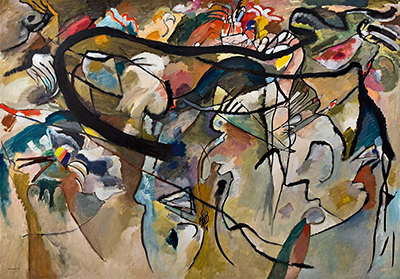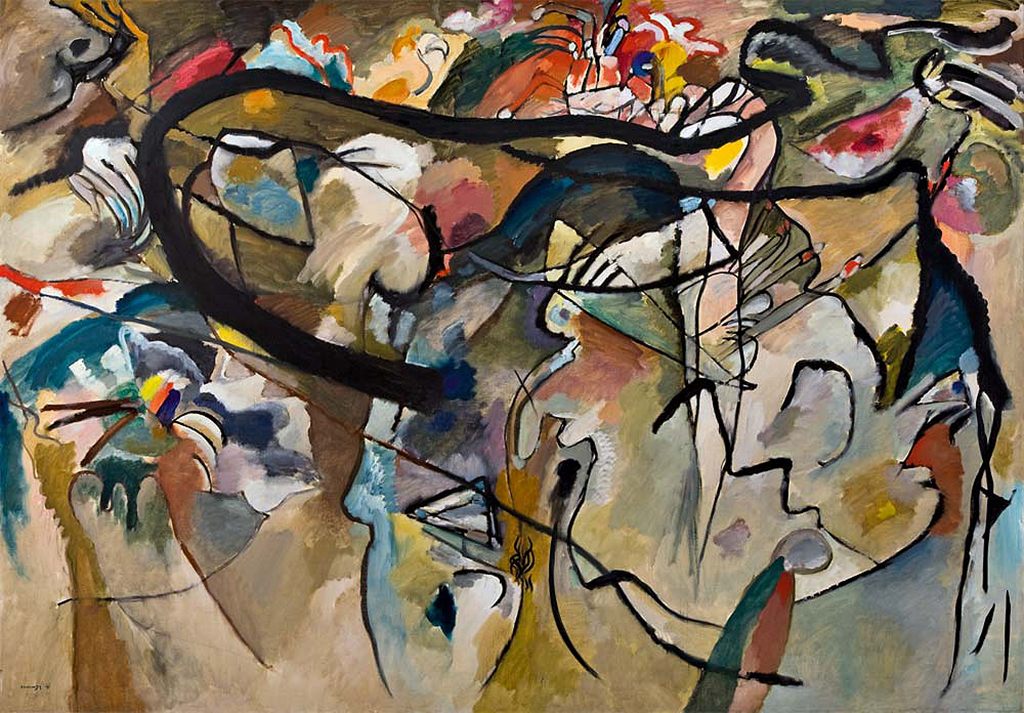Composition V arrived in 1911, relatively early in the development of its creator, Wassily Kandinsky. There is a swathe of activity right across the canvas, highly typical of this artist's most famous paintings.
This painting was famously rejected by New Society of Munich Artists, who did not wish to have it displayed as part of their overall exhibition. Several members chose to leave the group as a result of this decision, as a chasm had appeared between those wishing to move towards a greater level of abstraction plus those who wanted to retain the status quo. Kandinsky was one of those to leave, as was his friend Franz Marc. The Blue Rider movement was set up soon after this point and they continued to work creatively and unrestrained from that point onwards. This context is probably more significant than the actual content of Composition V, which itself is simply another iteration in a successful series.
The scene itself is a flurry of activity, with an excited flurry of line and form which shock immediately, before leaving behind a whole host of question marks regarding the actual items that sit in front of us. Normally, we can make some educated guesses at the objects that have reduced to abstract form, but this composition seems particularly tricky. Kandinsky produced 10 paintings for his composition series, and the aim of this group of work was to explore the combination of colour and varying degrees of abstraction. In truth, his whole career was focused on this theme, but this series was explicitly for that very purpose. Having left the New Society of Munich Artists, Composition V was put on display in the very first exhibition of the new group, entitled Der Blaue Reiter.
Academics have discussed this piece in an attempt to decipher the various elements but no clear conclusions have yet been made. Some have found possible religious themes such as angels, where as others have simply seen figures within a sprawling landscape. As the artist moved ever closer to a style of true abstraction, it would become harder and harder to understand his content. It is entirely possible that the lines and shapes are entirely creative an not meant to represent any real forms. He intended to deliver a form of chaos in beauty, and that is certainly what we can all see here. Those looking deeper for a better understanding might look at his work around this period, particularly other parts of this series in order to discover more clues about Composition V.





